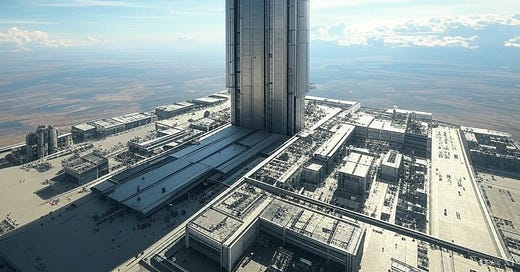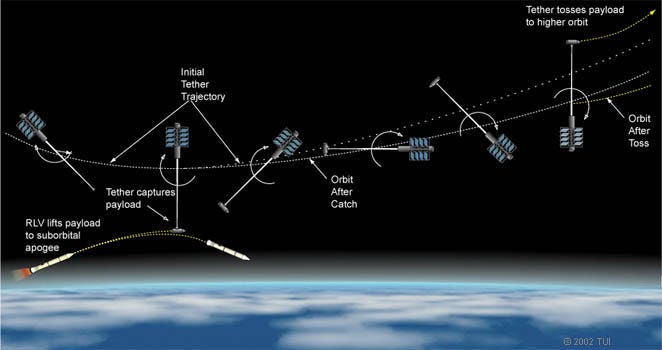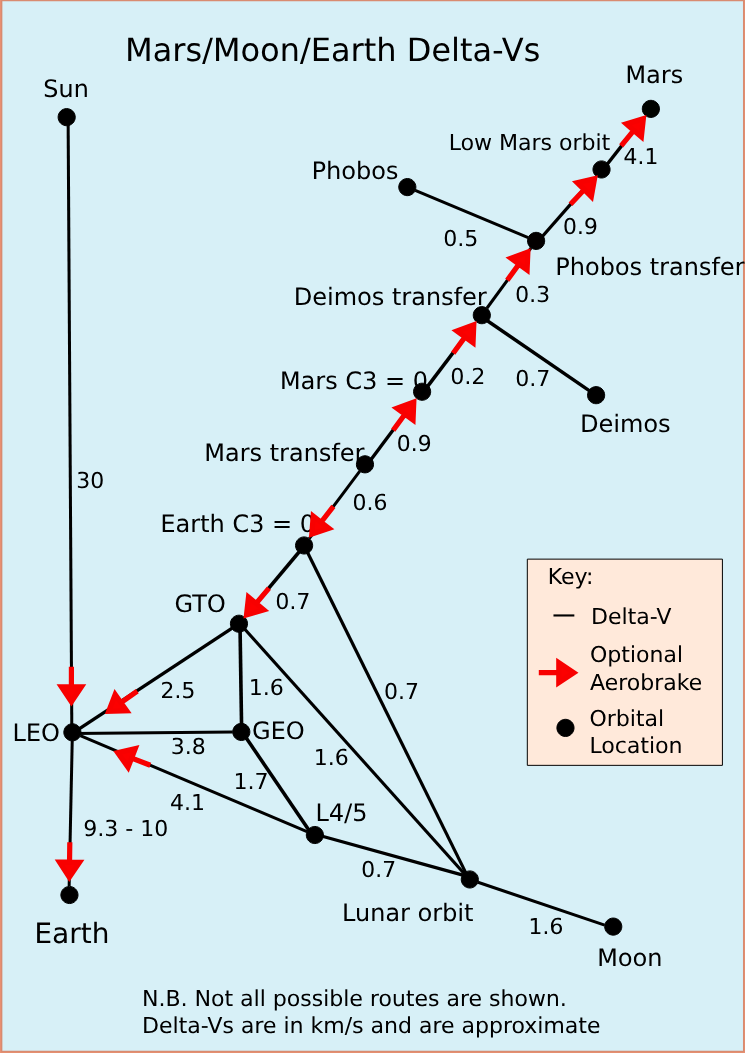Risk & Progress| A hub for essays that explore risk, human progress, and your potential. My mission is to educate, inspire, and invest in concepts that promote a better future. Subscriptions are free, paid subscribers gain access to the full archive, including the Pathways of Progress and Realize essay series.
“Earth is the cradle of humanity, but mankind cannot stay in the cradle forever.”
These words, attributed to Tsiolkovsky, remain true today. Humanity will eventually become extinct if it is forever confined to Earth. Yet it’s Tsiolkovsky's own rocket equation that keeps us confined to the cradle; as the payload mass to space increases, fuel requirements increase exponentially. Even with our best materials and most efficient engines; we can barely make it to Earth orbit, let alone other planets. Chemical rockets expend about 95 percent of their mass getting 5 percent of useful payload into orbit. To become multi-planetary we will need to “cheat” the rocket equation. That is where non-rocket travel may plug the gap. Space elevators and space tethers could greatly reduce the energy requirements and increase the safety profile of space access.
Space Elevators
A “space elevator” is a system that lifts payloads directly into space along an extremely strong cable, often called a “tether” or “ribbon.” This cable is affixed or anchored to the Earth’s surface on one end and connected on the other to a counterweight beyond Geostationary Orbit (GEO). One might think of a space elevator as a subway to the heavens. “Climbers” traverse up and down the cable using energy produced on Earth, possibly beamed from the ground via powerful lasers. The climbers don’t need to travel quickly or carry fuel, thus greatly reducing the energy requirements for getting into orbit and ostensibly making space travel much cheaper.
The challenge, of course, is building a space elevator in the first place. The initial infrastructure requirements are almost unfathomable. It would take dozens, if not hundreds, of traditional rocket launches, using the most capable rockets today to build one. The length and strength of the cable are the primary challenge; most designs call for a cable length of about 100,000 km. The cable will need to be extremely strong, able to survive micrometeorite and space debris impacts, radiation, gravitational tidal forces, and terrestrial weather, while also being extremely lightweight and flexible. Carbon nanotubes are one possible build material, but producing them at scale and free of defects, so far, eludes materials science. For now, at least, space elevators are relegated to science fiction.
Space Tethers: Orbital Slinging
But what if we didn’t extend a space elevator all the way to the ground? Instead, what if we extended it only far enough such that a launching rocket could catch the tip of the tether just outside of Earth’s atmosphere where the spacecraft could then be lifted along the cable to a higher orbit? This concept, often called a “space tether,” could be shorter, lighter, and would engender less strain on materials because it wouldn’t have to deal with terrestrial weather. Building such a tether would still, however, be beyond the realm of feasibility today.
We could, however, make the tether much shorter and lighter if we rotated it; using centrifugal force to transfer momentum to incoming spacecraft. A “skyhook,” for example, utilizes a relatively short cable, perhaps just a few hundred kilometers in length, with a heavy counterweight on the “short” end, and the long end extending almost into Earth’s atmosphere. A rotating skyhook would “catch” spacecraft as they depart Earth, flinging them into higher orbits by transferring momentum. This would enable orbital and velocity changes without chemical propulsion, circumventing the rocket equation.
Compared with a space elevator, a skyhook promises to be much more realistic in the near term. At less than a fraction of the size, a skyhook requires far less upfront infrastructure investment, especially if we taper the tether from base to tip, further reducing its total mass. Additionally, it wouldn’t require breakthroughs in carbon nanotubes or other supermaterials; we could probably build one from existing materials.
suggested that we might even build one out of glass fibers today if we wanted. Glass fibers can handle temperature extremes, are corrosion and UV-resistant, and can be made from space-based resources. Tethers of this kind can greatly reduce the fuel required to reach space. A skyhook to LEO, for example, could cut fuel requirements by over 80 percent.Beyond Earth
More broadly, space-based tethers could unlock a host of destinations for human travel. We can map out the “Delta-v” and rough fuel requirements of any solar system destination fairly easily.
calculates, assuming a rocket is already in Earth orbit, a tether can reduce the amount of fuel required to reach the Moon or Mars by about 70 percent. This figure includes the upfront fuel cost of building the tether. Eventually, long-lasting tethers that are reusable 1000 times or more, could lower the fuel requirements of reaching the Moon or Mars by an order of magnitude. Further, a pair of tethers placed in Earth and Mars orbit could be used to sling spacecraft back and forth, shortening the travel time between the planets from 9 months to five or fewer, while reducing the spacecraft’s total mass by 90 percent or more.Part of this incredible mass reduction comes from reducing the stress on the heat shield. Just as a space tether can accelerate a departing craft, it can also decelerate arriving spacecraft. Capturing this energy and slowing the incoming spacecraft reduces the heat load during reentry, allowing for a thinner and lighter heat shield. This property, the ability to both accelerate and decelerate spacecraft, will be crucial to landing cargo ships on asteroids that have no atmosphere for braking at all. A tether positioned around a large asteroid would make asteroid mining possible, unlocking trillions of dollars of valuable resources for further human expansion into the cosmos.
Staying in Orbit
Should we one day build a space tether, the challenge will be keeping it in orbit. Every time the sling is used, momentum is lost; they aren’t perpetual motion devices after all. Atmospheric drag, gravity gradients…etc will slow and eventually stop the tether’s momentum. This challenge, however, is manageable. We could, for example, do as we do with space stations and install a small thruster onto the tether’s counterweight that is powered by fuels that do not boil off in the vacuum of space. When the tether loses too much momentum, it reboosts itself using onboard fuel. Incoming spacecraft could provide a fuel top-up when needed.
Alternatively, instead of a traditional chemical thruster, we could use a Hall thruster. Although they provide little thrust, they do so with an extremely high specific impulse (~1600 seconds) compared to a chemical thruster (~300 seconds) greatly reducing the fuel required. Another promising approach is an Electrodynamic Reboost tether. These require a conductive cable material; as the tether rotates and moves through the Earth’s magnetic field, a voltage is induced inside the tether, much like a generator on Earth. The interaction between the magnetic field and the electrical current produces a Lorenz force. By controlling this current, we can use this small force to keep the momentum of the tether going almost indefinitely.
My favorite approach to this problem, however, is simpler; just balance incoming and outgoing spacecraft. We might think of a space tether as a kind of rechargeable momentum “battery.” Every time it slings a spacecraft outward, it loses some momentum, but every time it catches and slows an arriving spacecraft, it gains momentum. We can greatly reduce the required reboosts by balancing incoming and outgoing transfers so that momentum energy is conserved. This will work especially well when there is regular travel of ships between celestial bodies, such as cargo resupply flights to and from the Moon.
Exploring the Cosmos
We humans naturally seek to expand and explore. Tens of thousands of years of human history, much lost to time itself, have been spent in the cradle of Earth. In the 20th Century, we reached beyond that cradle for the first time, but only under the extreme force of government funding and political will. If we are to truly expand, to take our first steps into the cosmos in the 21st century, we will need to make space economical. Reusable rocketry is only the first step. Once perfected, we will be able to affordably build space tethers that circumvent the rocket equation. Once this infrastructure is in place, will we be able to build a self-sustaining colony on the Moon or Mars and mine asteroids for space development. These first small steps will enable us to conquer our solar system and hopefully, ensure the survival of our species.
You may also like….









For some reason I don't have the "space bug" as strongly as some others do, so I take these ideas as "not impossible but possibly too difficult or expensive to actually achieve". But we have surprised ourselves before!!
I am glad you did address the orbital loss situation, although I suspect conservation of momentum will still catch us up? How else are you adding momentum to the spacecraft returning from the moon or mars such that that momentum can counteract the loss from the initial launch into space?
On your sling diagram, it seems to me it shows a suboptimal approach, using an "overhand pitch" rather than an "underhand pitch" scheme? Isn't the momentum of the payload-to-be-caught acting against the momentum of the tether slinging action?
If you look at the electrical activity of cables in the sky (think Ben Franklin)… and you know how hurricanes actually form, and you research what happened when a space shuttle extended a metal cable, once, to see what would happen (hint: it fried the electronics) I think you’ll move away from this idea.
My guess: a stationary hurricane will start to form around any earth-anchored tether or “space elevator” (if it’s conductive) and the eye will center itself on said structure. Why do I think this? Long story. I can’t talk about it.
This device is truly interesting though, it’s an advanced version of Tesla’s flying chair concept: https://m.youtube.com/watch?v=cFtkFRUDAbE
Similar to the Dean drive, this is some kind of gyrokinetic thruster.